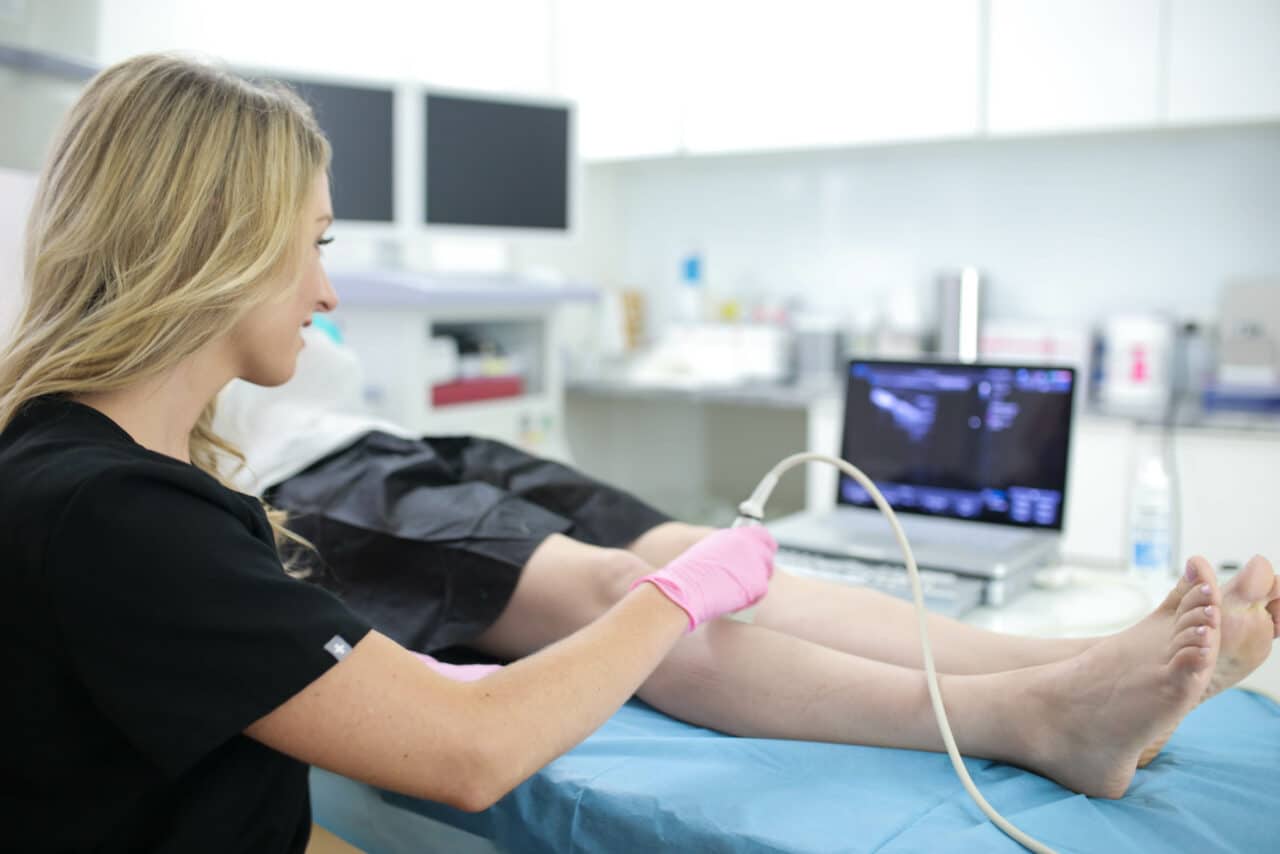Do Varicose Veins Cause Pain or Discomfort?
Varicose veins can be asymptomatic. But many people experience one or more uncomfortable symptoms with varicose veins. This is particularly true if the patient has Chronic Venous Insufficiency, which is a common cause of varicose veins and spider veins. If your varicose veins are painful, book an appointment with Harvard-trained vein doctors in California for diagnosis and treatment. Left untreated, varicose veins can produce increasingly severe complications, including blood clots, profuse bleeding, and slow-healing ulcerations.
Here are a few of the unpleasant sensations caused by varicose veins and Chronic Venous Insufficiency.
- Leg pain
- Muscle cramping
- Heavy feeling in legs
- Restlessness in legs
- Pinching sensation
- Tightness and swelling
- Venous ulcerations
- Itchy skin
- Venous stasis dermatitis
- Leg fatigue

Is a Painful Line on Leg or Popped Vein in Wrist a Red Flag?
If you have painful, bulging lines on the legs, is it cause for concern? How about a popped vein in a wrist that protrudes beneath the skin? A leg vein that is enlarged, twisted, and protuberant is cause for concern, whether it hurts or not. Leg veins are covered by thicker skin and more layers of fat than veins in the hands and wrists. So, when a tortuous vein protrudes in the calf or thigh, it might be varicose.
If your vein is painful, it’s even more important to see a vein doctor promptly, to rule out a blood clot or deep vein thrombosis. Veins that pop above skin level in the hands, wrists, feet, ankles, forehead, and other areas with thinner skin aren’t necessarily varicose. However, they too should be examined since varicose veins can occur anywhere. Varicose veins are often dark purple, blue, or green, and they look larger and more twisted than other veins nearby.
What Part of the Vein’s Anatomy Causes Discomfort?
Veins have three layers. The outermost layer of vein anatomy is called the tunica adventitia, and it gives the vein structure. The middle layer is called the tunica media, and it contains muscle cells that enable the vein to widen or constrict, to accommodate variations in blood flow. The innermost layer is called the tunica intima, and it’s comprised of endothelial cells with smooth surfaces to facilitate blood flow.
The tunica intima of many veins is also lined with tiny valves that close once blood passes through. These valves are essential to keeping blood flowing in a singular direction, toward the heart. If a valve fails, blood flows in reverse and collects beneath the valve. This increases pressure in the vein, causing it to bulge and contort into a varicosity. It also causes the symptoms mentioned above, like swelling, cramping, heaviness, itchiness, and restlessness in the legs.
How Can a Diagram of Veins in Legs Help Determine Treatment?
Arteries pump oxygenated blood from the heart to deliver nutrients and oxygen throughout the body. The deoxygenated blood is transferred to veins, which must pump it back to the heart to collect more oxygen. When vein valves fail, this process is impeded, since those veins can’t pump blood as efficiently. Click on this leg vein diagram to understand how blood vessels work together.
Vein doctors can use Doppler Ultrasound to bounce sound waves off your veins. A vein with a broken valve or accumulation of blood sounds different than a healthy vein. These sounds are translated into videos and images on a screen that create a customized leg veins diagram. By mapping veins in legs, a diagram illustrates where the trouble is in your particular blood vessels, and what the right treatment will be.
Why Should a Doctor Who Studied Vein Anatomy Treat You?
Each patient has unique vein anatomy, and you cannot detect valve failure by looking at the surface of the skin. Doctors who studied the anatomy of veins understand that the root of the problem could be several inches away from the visible damage. They have the tools to look for vein disease, broken valves, and blood clots, unlike dermatologists or cosmetic vein specialists.
In addition, vein doctors can produce photographic evidence of your underlying problem, which helps you acquire insurance coverage for varicose vein treatment. Cosmetic vein procedures are often considered elective by insurance carriers. So, choose a vein doctor who can prove medical necessity and provide minimally invasive treatment.
Are Varicose Veins Dead Veins or Can They be Restored?
Some varicose veins can be monitored and don’t require treatment right away. In certain instances, like pregnancy, a varicose vein might improve once endovenous blood pressure reduces. Some patients will only require lifestyle adjustments like wearing compression stockings or avoiding long periods of standing or sitting.
But, for many patients, a varicose vein will worsen over time. It’s best to treat them promptly to restore your circulation. Varicose veins and spider veins are both inefficient at pumping blood back to the heart, so it’s advised to close them off and redirect blood into veins that can pump it efficiently back to the heart.
Like varicose veins, spider veins often result from valve failure that increases pressure in the vein. Spider veins aren’t dead veins, but they are dead ends. They branch out from engorged veins to contain the excess blood. They don’t lead back to the heart, so they are useless to your circulation and safe to eliminate.
Can a Vein and Pain Treatment Clinic Treat Painful Veins?
Do varicose veins hurt? For many patients, the answer is yes. They’re not just physically uncomfortable, they’re also detrimental to your vascular health. Some varicose veins remain asymptomatic and unproblematic. But there’s no way to guess how yours will progress. If varicose veins and spider veins run in your family, you’re likely to continue developing them until you seek treatment. Visit our Centers of Excellence in San Diego or San José for painless, minimally invasive varicose vein treatment.